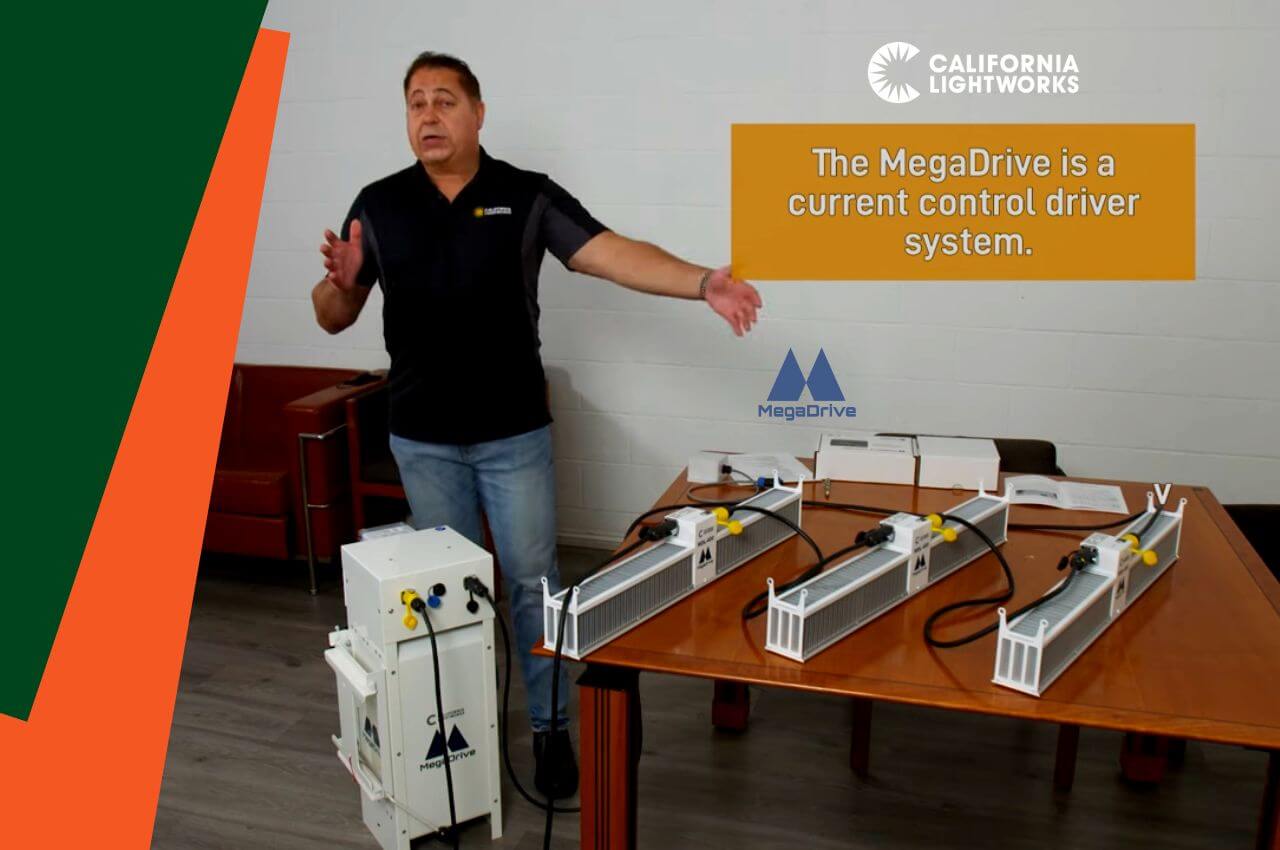When you are first learning about LED technology, drivers can be among the most confusing aspects of light fixtures. A driver is an electrical device that regulates power in an LED fixture and is a crucial component of an LED’s operating system.
An LED’s forward voltage – the amount of volts a diode requires to conduct electricity – decreases as temperature increases. This causes the LED to draw more current and get hotter and hotter, eventually causing the LED to burn itself out. This is called “thermal runaway.”
A driver alternates current appropriately to prevent this from happening. Without a proper driver, your LED will eventually burn out. This is why selecting a quality driver is so important.
LED Drivers: What Are My Options?
Resistor-Based LED Drivers
Resistor-based drivers are inexpensive and produce a fixed voltage and current, but are highly sensitive to temperature changes. Therefore, you should never use them with LED grow lights.
Constant Current Drivers and Constant Voltage Driver
Constant current drivers and constant voltage drivers are the two most commonly used drivers for LED lights.
Constant current drivers produce a consistent current level regardless of external temperatures. They use sensing circuits that allow the driver to adjust as necessary as the internal temperature of the grow light increases, regulating the current and preventing thermal runaway.
Constant voltage drivers produce a fixed output voltage range that falls between 24 and 48 volts. Constant voltage drivers are useful when using multiple strings of LED lights.
The main advantages of constant current drivers is that they rarely violate the maximum current specified for LED lighting, which provides excellent protection against burnout and thermal runaway. They also tend to create more consistently bright lights as opposed to other options.
However, constant voltage LEDs are a more familiar technology for installation engineers and work better with strip lights. Therefore, they are potentially a superior choice for larger commercial growers. The overall cost of constant voltage drivers also tends to run lower, but prices vary based on individual need.
High Voltage Direct Current
This is a very new technology – especially in terms of LEDs. It involves the use of large, remote, and more efficient drivers to power a few dozen grow lights.
The main benefit of high voltage direct current lights is they use Class 2 wiring between the driver and fixture, which can be safely handled by the average person. This means anyone can install high voltage direct current drivers, eliminating the need to hire electricians. Remote drivers can also reduce the fixture cost as a single driver is used for multiple fixtrues.
The new MegaDrive series from California Lightworks uses remore drivers and high voltage direct current to lower both fixture and installation costs.
What Driver Do I Need?
Consider Your Output And Input Voltage/Current
One of the most important factors to consider when choosing drivers is input and output voltage.
LED lights should list their output requirements somewhere on the packaging, and it is very important to choose drivers that can accommodate your fixtures. In general, your LED light needs a driver with as many volts as it takes to operate. A 12 volt LED would require a 12-volt driver, a 30 volt LED would require a 30-volt driver, and so on.
You also need to consider the input voltage. That is, the voltage supply of your location. Most conventional homes supply an average of 120 volts, while commercial facilities and industrial operations supply an average of 277 or even 480 volts. However, always double check with an electrician. Most drivers are built to accept a large range of input volts, but you should be positive your building’s input voltage is compatible with your driver.
If you are using constant current drivers, check current input/output ranges – measured in amps or milliamps – as well to ensure compatibility.
Max Wattage
Your driver should never have a lower max wattage than your light. However, if a driver’s max wattage exceeds that of your light by too much, this can also cause issues. In general, your light should use at least 50% of the driver’s maximum wattage.
Dimming
The two most common types of drivers – constant-current and constant-voltage – can include dimming capabilities. You should be able to find this information somewhere on the label or product datasheet. If you do not see any mention of dimming, a driver likely does not come with that feature.
The new MegaDrive series from Califonia Lightworks features both dimming and spectrum control for optimum lighting in all situaitons.
LED Drivers: The Bottom Line
Choosing drivers for your LED fixture is a vital part of the process. Constant current LED drivers remain the most common type of LED drivers and are suitable for most fixtures. However, other options – like constant voltage and high voltage – can accommodate more specific needs.
Whichever type of driver you select, remember to consider factors such as input and output voltage, max wattage, and dimming capabilities.
It will take some time and research to select the best driver for your LEDs, but it is well worth the extra effort. Without the right driver, an LED light will burn out fast.





